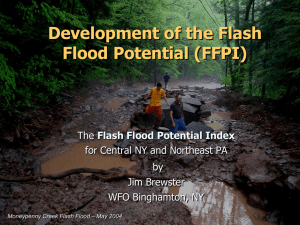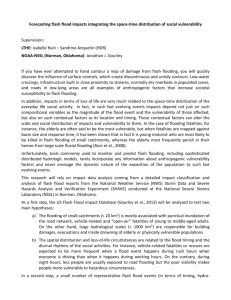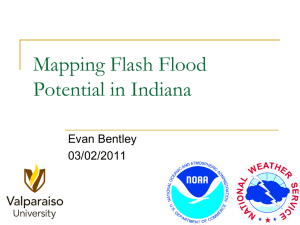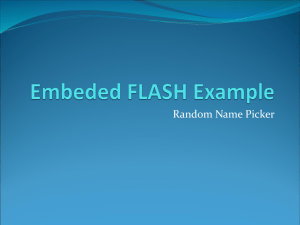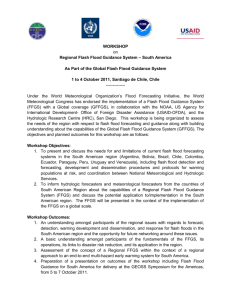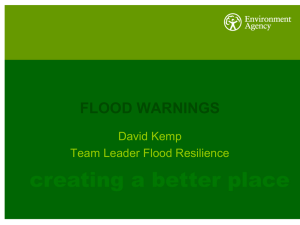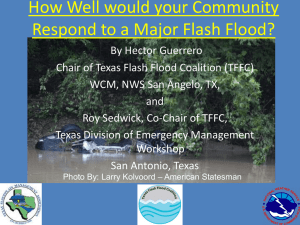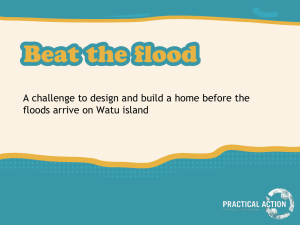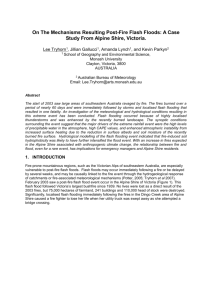FFPI at WFO Binghamton
advertisement
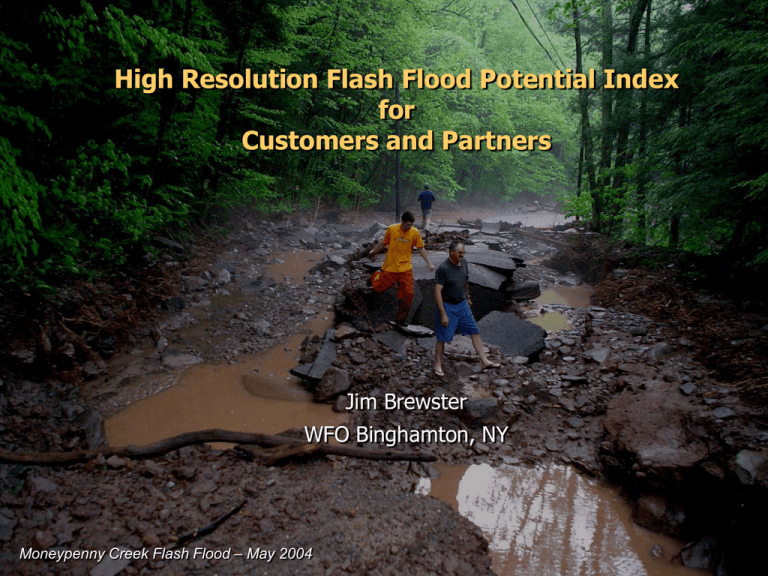
High Resolution Flash Flood Potential Index for Customers and Partners Jim Brewster WFO Binghamton, NY Moneypenny Creek Flash Flood – May 2004 Background Flooding is WFO Binghamton’s #1 High Impact Hazard Central NY and Northeast PA have highly variable geography, land cover and use. Steep, rocky terrain along with flatter sandy plains Areas of urbanization Wide range of forest cover Similar soil types Experienced forecasters realized that some areas are more prone to flash flooding than others. But, Where and to what extent? Flash Flood Potential Index (FFPI) Developed by hydrologist Greg Smith, CBRFC (2003). Geographical features play a key role in flash flooding Developed as background information to be incorporated into production of better gridded Flash Flood Guidance Using the FFPI, the roles of land, vegetation and urbanization in flash flooding are visualized “Guesswork” to the flash flood problem is reduced Methodology for creating FFPI Collected available geographic data sets Used GIS technology to resample, project and index the data into to a common value Mathematically develop a new geographic index grid…the FFPI The Data Four geographic data sets : Slope derived from the USGS DEM (Digital Elevation Model) MLRC Land Use/Land Cover Grid AVHRR Forest Density Grid STATSGO Soil Type Classification Methodology Review Weight average the geographic layers. FFPI = (1.5*Slope + LC + Soils + Forest)/N Local adjustment to calculation Reviewed against historical events Flash flooding occurs in our forested areas. Is that element really much of an influence here? FFPI = (1.5*Slope + LC + Soils + 0.5*Forest)/N Raw grid is then averaged to individual basins. 90 Meter Resolution Warm colors = High Potential Cool colors = Low Potential FFPI mapped to FFMP Basins Fit our historical events New realizations, especially the low FF potential areas. Differentiates the “best of the worst” basins in an area generally known for high flash flood potential. FFPI Versatility Exportable to other platforms KML/KMZ GeoTiff Google Earth ESRI shape file High Resolution in Action November 16, 2006 Flash Flooding & Mud slides Fatal Gorge Flood Storm Total Precipitation 90 m - High Resolution Glen Brook Fatalities Use of high resolution FFPI in a GIS environment can benefit emergency managers, planning boards, town highway departments, and other local officials and groups. Summary The FFPI was developed in Binghamton due to the important need to have a static geophysical reference grid which better illustrates how local earth system features contribute to flash flooding. The FFPI is best used in flood operations when mapped to our AWIPS FFMP basins for comparison with other flash flood tools and techniques. Through GIS technology, the index can be exported to many formats for use by other government agencies, customers and partners for planning and mitigation. Please send requests for GIS FFPI layers to james.brewster@noaa.gov
